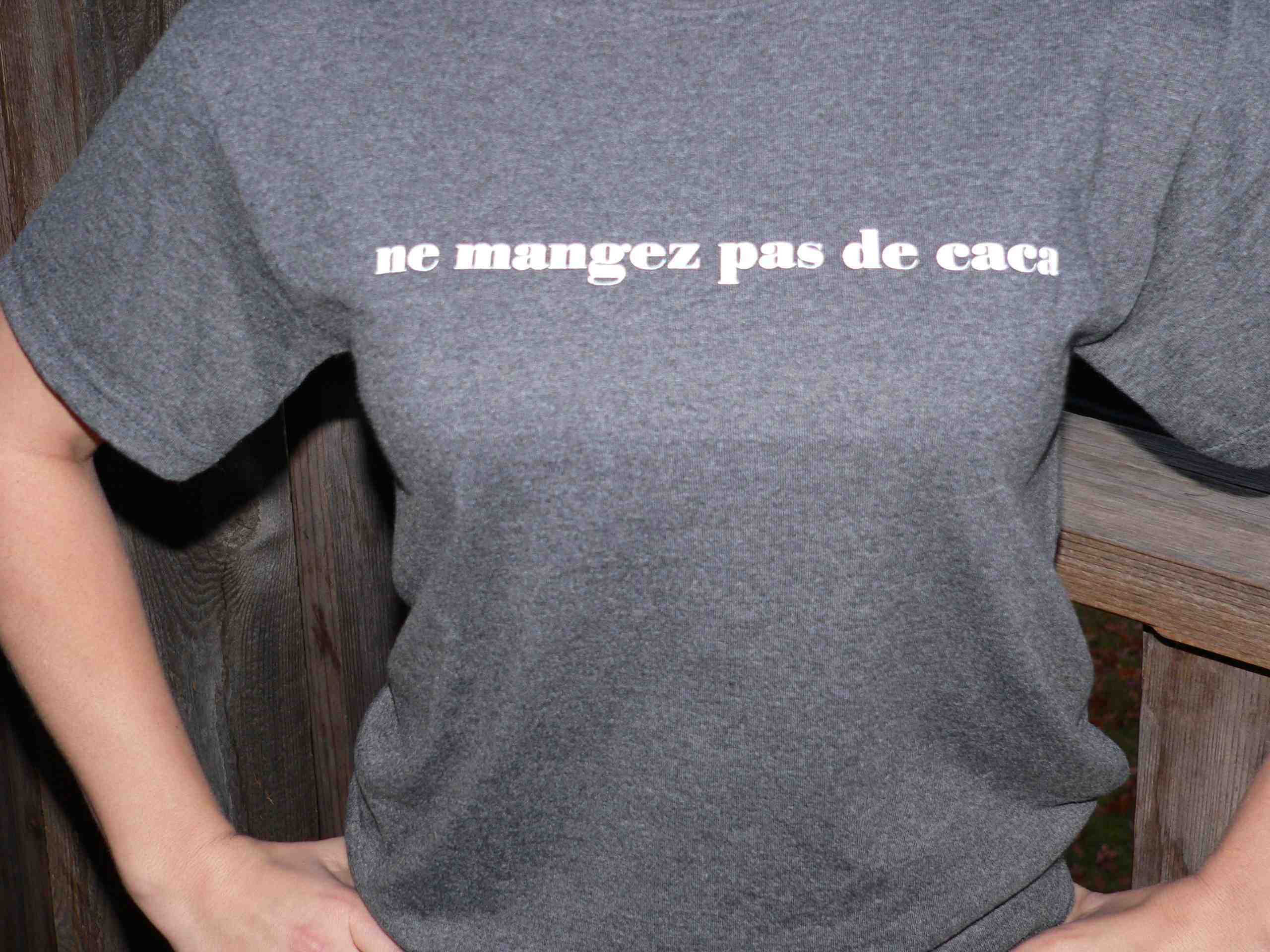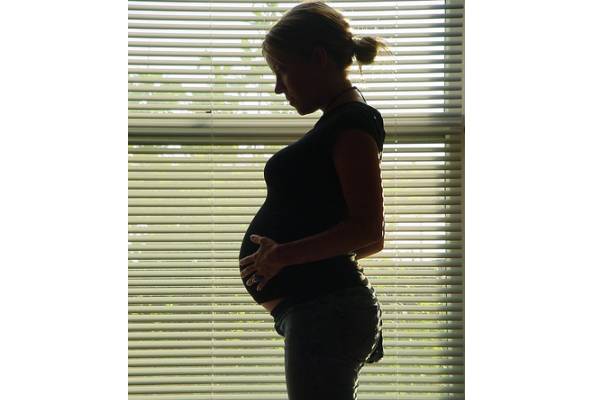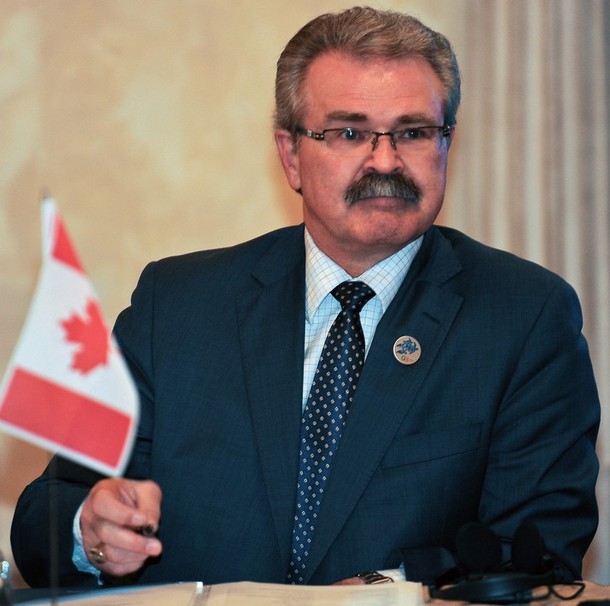It’s food safety month in September, so expect to hear lots of sanctimonious statements about how simple food safety is if only the people would do things the right way.
But what’s the right way?
Food safety is not simple.
Anyone who says so is full of it.
And any food safety nerd knows there are major disagreements about all levels of food safety minutia.
Eating Well magazine asked 10 questions of some food safety types earlier this year and a bunch of stories are now on-line.. The differences in the answers reveal how un-simple food safety is, and how different people talk with journalists.
The Eating Well piece poses some questions, but doesn’t address the hard ones: Who is an expert (a word I hate)? Who is competent to offer advice about anything? Who am I to answer anything, to offer an opinion?
At bites.ksu.edu and barfblog.com, we actually have a policy on how to answer questions, how we provide advice, and it’s being updated.
The magazine has its 10 commandments of food safety, but like fallen angels, commandments are open to interpretation. Judge for yourselves.
Your contestants are:
Ming Tsai, owner, Blue Ginger, his award-wining East-meets-West restaurant in Wellesley Massachusetts.
Bill Marler, managing partner and personal injury lawyer at Marler Clark.
Linda Kender, an associate professor in the College of Culinary Arts at Johnson & Wales University in Providence, R.I.
Richard Vergili, a professor in hospitality management at The Culinary Institute of America (CIA)
Catherine Donnelly, a professor of nutrition and food science at the University of Vermont.
Donna Rosenbaum, co-founder and executive director of Safe Tables Our Priority (S.T.O.P.).
Marion Nestle, professor in the Department of Nutrition, Food Studies, and Public Health at New York University.
Scott Donnelly, a product safety authority with more than two decades of food industry experience.
Douglas Powell, Ph.D, associate professor, food safety, Kansas State University.
Try to distinguish the wordy from the brief, the fact-based and the faith-based approaches to food safety. Match up the bios with the responses and spot the hypocricy.
Eating Well asked, do you always:
1. Use a “refrigerator thermometer” to keep your food stored at a safe temperature (below 40°F).
Tsai: At Blue Ginger, yes, and [a thermometer] is built in the Sub-Zero fridges we use at home.
Marler: Yes.
Kender: I check the temperature of my refrigerator once a week, especially during the summer months.
Vergili: Yes, unless I plan to use the food within a couple of hours.
Donnelly: Yes. I consider my refrigerator to be my most important food-safety device. Knowing the temperature of the refrigerator you use to store food is critical to keep food safe. Many refrigerators in the U.S. operate at unsafe temperatures, and the warmer foods are stored, the more quickly bacteria, including pathogens, can grow.
Rosenbaum: Yes. Appliance thermometers are easy to find in hardware stores. I recommend using one in the freezer as well. It is especially important to check the internal temperatures of secondary refrigerators/freezers kept in basements, garages or other places of more extreme room temperature.
Nestle: No. I live in a tiny apartment in New York and have a small refrigerator. Nothing stays in it that long.
Donnelly: No.
Powell: Fridges fluctuate and thermometers are the only way to acquire accurate data.
2. Defrost food in the refrigerator, the microwave or in cold water, never on the counter.
Tsai Yes.
Marler: Yes.
Kender: Mostly I defrost in the refrigerator, but there have been occasions that I had to resort to the cold running water method.
Vergili: No, I will occasionally let something begin to defrost on the counter when I am home. For example, today I had some frozen wrapped spare ribs sitting out for a little over [an] hour that [were] still partially frozen. [I] then seasoned and refrigerated [the ribs] for dinner tonight.
Donnelly: Yes. When defrosting any potentially hazardous food, particularly meats or poultry, it is important to make sure juices are contained by using sealed bags or containers. Juices can contain harmful pathogens which can contaminate surfaces and people coming into contact with these juices. Again, the warmer potentially hazardous foods are stored, the more potential growth for dangerous bacterial pathogens to levels which can cause disease.
Rosenbaum: Yes. This is especially important with meat, poultry & seafood. When defrosting meat, poultry or seafood in the refrigerator, however, it is important to make sure that it is on a platter or tray and cannot drip raw juices as it defrosts onto or into foods stored below.
Nestle: Not exactly. I don’t have much counter space so I’m most likely to leave it out in a bowl.
Donnelly: I rarely defrost. When I do, I leave the food out on the counter for less than 4 hours.
Powell: I defrost on the counter. I just don’t leave it there very long.
3. Always use separate cutting boards for raw meat/poultry/fish and produce/cooked foods.
Tsai: Definitely—especially because of food allergies, too, on cross contamination.
Marler: Yes.
Kender: No. I always wash, rinse, and sanitize my cutting board when switching proteins or going to a no cook product.
Vergili: No, I will thoroughly clean the same cutting board and use the same board for both raw and cooked products.
Donnelly: Yes, and I make sure to regularly clean and sanitize these boards after use.
Rosenbaum: I do, but this isn’t always practical. It’s more important to clean and sanitize cutting boards thoroughly between uses, even if you only use it for one type of item. Also, inspect your cutting boards from time to time. When they develop deep knife grooves it may be harder for cleaning solutions to reach and kill any bacteria present and then it’s time to replace the board.
Nestle: No. I wash the one I have in between [uses].
Donnelly: Yes. Or I clean and sanitize the same board.
Powell: No, but I clean cutting boards thoroughly.
4. Always cook meat to proper temperatures, using a calibrated instant-read thermometer to make sure.
Tsai: No, I love my burgers rare and my lamb and steak medium rare. I will be struck by lightning or chomped by a great white before undercooked meats get me!
Marler: Yes.
Kender: No. In my house we like our steaks medium rare and our burgers pink in the middle. No one in the high-risk category lives in my home.
Vergili: I have a preference for many grilled foods to be undercooked such as tuna and pasture-raised porterhouse pork chops.
Donnelly: Most of the time. When grilling, I purchase low-risk products (intact muscle meats as opposed to ground beef) and insure that the outsides of these products (where contamination resides) are well cooked. For poultry and roasts, I always use a meat thermometer.
Rosenbaum: Yes, I always use a thermometer. In regards to beef, it is impossible to tell when it is safe to eat without using a thermometer. The color of the cooked meat is a very inaccurate indicator for safety. Different types of beef require different cooking temperatures and the type of thermometer used may also vary. Very thin beef patties, for instance, are best checked with a thermocouple (a type of temperature sensor) while roasts and steaks can use a larger-gauge thermometer.
Nestle: I cook it hot enough but don’t use a thermometer.
Donnelly: No. I use visual cues based on experience.
Powell: Yes. Color is a lousy indicator. I feel naked without a thermometer.
5. Avoid unpasteurized (“raw”) milk and cheeses made from unpasteurized milk that are aged less than 60 days.
Tsai: No, I love the flavor of unpasteurized. See above for lightning and shark.
Marler: Yes!
Kender: Yes, absolutely. I also avoid unpasteurized cider and fruit juices as well.
Vergili: As a rule yes, but I have gone out of my way to buy “certified” raw milk on rare occasions and tasted cheese from a known cheese maker as well. Frankly, there are some questions surrounding cheese made from raw milk and listeriosis despite 60 days of aging.
Donnelly: I do not consume raw milk as I know this is a high-risk product, and most producers are exempt from requirements specified in the Pasteurized Milk Ordinance which greatly enhance milk safety. For raw milk cheeses aged for less than 60 days, if they are AOC or PDO cheeses which I am purchasing and consuming in Europe, I have great confidence in the regulations and production procedures/processes which include stringent microbiological criteria, thus I know these cheeses pose a low food-safety risk. Cheeses made by unlicensed manufacturers and distributed illegally pose a great public health risk and I would not consume such products.
Rosenbaum: Yes. I believe the risk inherent in any raw dairy product far outweighs any potential benefit. This is especially important for pregnant women to avoid as they are at risk for contracting Listeriosis from raw dairy products, which carries a high rate of premature labor and spontaneous abortion.
Nestle: Not always. If I know the supplier, I’ll take the small risk.
Donnelly: Raw milk cheese is safe; raw milk is not.
Powell: Yup. Not worth the risk, especially for pregnant women, and my wife had a baby six months ago.
6. Never eat “runny” eggs or foods, such as cookie dough, that contain raw eggs.
Tsai: No, again, shark and lightning. But at BG, we do use pasteurized eggs and egg whites for desserts (like sabayon and in the hollandaise we make once a year for the Greater Boston Food Bank’s Super Hunger Brunch).
Marler: Correct.
Kender: I never eat runny eggs or anything that contains raw eggs. I even prepare my own Caesar salad dressing using pasteurized egg yolks.
Vergili: No, I will eat classic scrambled eggs which are a bit runny, as well as a poached egg cooked less than the 145ºF [that] the codes call for.
Donnelly: Yes. I avoid consumption of raw eggs. There are excellent pasteurized egg products available to consumers which substantially reduce risks posed by pathogens such as Salmonella, Campylobacter and Listeria.
Rosenbaum: This is difficult to answer with the word “never” in it. My answer would depend on whether or not pasteurized eggs were used. When dining out, I always ask whether raw eggs were used in dishes such as sauces, mousses, tiramisù and dressings. If so, then I would avoid these foods unless I knew the facility was using pasteurized eggs. At home, pasteurized-in-shell eggs have become available in my area and I use these whenever I want to enjoy foods that would be risky if using regular eggs and not cooking thoroughly. Interested consumers can request that their grocers carry in-shell pasteurized eggs.
Nestle: Don’t be silly. I’m human.
Donnelly: Eggs should be cooked.
Powell: Nope.
7. Always wash your hands in warm soapy water for at least 20 seconds before handling food and after touching raw meat, poultry or eggs.
Tsai: Yes, definitely!
Marler: Yes.
Kender: I must admit that at my home I may not get through “Happy Birthday” twice before working with some food items, but absolutely always after working with raw meats and poultry!
Vergili: Yes, this is one of the easiest ways to prevent the spread of both pathogenic bacteria and viruses without compromising the culinary preference for a food.
Donnelly: Yes, and I prefer to use antibacterial soaps after handling these products.
Rosenbaum: Yes, or use hand sanitizer. It’s important to thoroughly clean the faucet handle if you’ve touched it after handling raw foods, too. Also, take along hand sanitizers when going to picnics and barbecues away from home where soap and warm running water would be hard to find.
Nestle: Wash hands, yes, but I don’t count seconds.
Donnelly: Yes.
Powell: Nope. 20 seconds is too long and water temperature doesn’t matter; but I do wash my hands routinely.
8. Always heat leftover foods to 165ºF.
Tsai: Yes.
Marler: Yes.
Kender: Never have leftovers at my home.
Vergili: No, as stated, this is one of the most misunderstood regulations. The recommendation basically pertains to leftover items in large volumes like chili or thick soups that need to be reheated slowly to ensure quality. A piece of beef previously cooked, such as a serving of prime rib, need not be reheated to 165ºF (it becomes more like pot roast).
Donnelly: Yes.
Rosenbaum: I do not generally use a thermometer for leftovers. I do re-cook soups and liquids until they boil, and heat other leftovers until they are steaming. It’s important to stop midway and stir food reheated in the microwave due to cold spots and uneven heating.
Nestle: I get them steaming hot, but don’t measure.
Donnelly: No. I use common sense.
Powell: Nope. 140ºF is sufficient if it has already been cooked.
9. Never eat meat, poultry, eggs or sliced fresh fruits and vegetables that have been left out for more than 2 hours (1 hour in temperatures hotter than 90°F).
Tsai: Fruits and veggies, fine. Meat and seafood, no! At BG, we are always very cognizant of the temperature danger zone; everything is refrigerated and/or cooled down properly.
Marler: Yes.
Kender: Never….especially during summer here in New England. I insist that all our outdoor activities, such as cookouts, have ice, and lots of it, that is used to keep the salads and other food items cold.
Vergili: No, if [it’s] at a group gathering, I would consider eating a raw vegetable or fruit that has been served unrefrigerated (assuming it hasn’t become oxidized, [which I find] unappealing).
Donnelly: Yes, Adherence to proper storage temperatures and the 2-hour rule are proven food-safety measures.
Rosenbaum: Yes. The rule in our house is, “If in doubt, throw it out!” I try to have several trays of the same food prepared when I entertain so they can be rotated and refrigerated in between.
Nestle: You don’t say whether these are cooked or uncooked or what the ambient temperature might be. Microbial growth rates depend on those factors.
Donnelly: No. I use common sense. 4 hours is the limit
Powell: did not offer a response (shurley sum mistake – dp)
10. Whenever there’s a food recall, check products stored at home to make sure they are safe.
Tsai: Yes.
Marler: Yes.
Kender: Yes. I receive recall notices at work and take that information home with me and always double check what I’ve purchased
Vergili: Yes, I would do that.
Donnelly: Yes. In fact, I just returned some cookie dough to a retail outlet for a refund.
Rosenbaum: Yes, and since recall information on food products is very difficult for consumers to obtain, my organization constantly looks for recalls and sends them in daily e-alerts to email inboxes. Anyone can sign up to receive them by sending a request to mail@safetables.org or go to our website daily at www.safetables.org to view them. Some stores post food recalls, while others send text messages or mailed notices. It is important for consumers to throw away or return for refund any product subject to a recall, as these products have either already made people sick or have a high likelihood of being contaminated. If you believe someone in your family has already eaten the product and/or gotten ill, you should keep the product and safely wrap and store it for the health authorities to test.
Nestle: I’ve never had a product involved in a recall except the can of recalled pet food given to me as a research gift for my book, Pet Food Politics.
Donnelly: I purchase locally grown, fresh foods.
Powell: Sure.
 That’s why we have don’t eat poop shirts in French, Chinese and Spanish.
That’s why we have don’t eat poop shirts in French, Chinese and Spanish.


 As The Washington Post reports this morning
As The Washington Post reports this morning(2).jpg) CEO Micheal McCain said
CEO Micheal McCain said.jpg) • Warning labels. Pregnant women and other at-risk populations should be informed of listeria risks, using a variety of messages and a variety of media. The
• Warning labels. Pregnant women and other at-risk populations should be informed of listeria risks, using a variety of messages and a variety of media. The .jpg) On Aug. 27, 2008, McCain told a press conference
On Aug. 27, 2008, McCain told a press conference These days, food safety culture is the buzz
These days, food safety culture is the buzz The best food producers, processors, retailers and restaurants will go above and beyond minimal government and auditor standards and sell food safety solutions directly to the public. The best organizations will use their own people to demand ingredients from the best suppliers; use a mixture of encouragement and enforcement to foster a food safety culture; and use technology to be transparent — whether it’s live webcams in the facility or real-time test results on the website — to help restore the shattered trust with the buying public.
The best food producers, processors, retailers and restaurants will go above and beyond minimal government and auditor standards and sell food safety solutions directly to the public. The best organizations will use their own people to demand ingredients from the best suppliers; use a mixture of encouragement and enforcement to foster a food safety culture; and use technology to be transparent — whether it’s live webcams in the facility or real-time test results on the website — to help restore the shattered trust with the buying public..jpg) Chuck took my graduate course, Food Safety Risk Analysis, in the early part of 2008. For the final assignment, students are required to take a food safety risk issue of their choosing, and develop a risk analysis report for an audience, like a regulatory agency, integrating risk assessment, management and communication.
Chuck took my graduate course, Food Safety Risk Analysis, in the early part of 2008. For the final assignment, students are required to take a food safety risk issue of their choosing, and develop a risk analysis report for an audience, like a regulatory agency, integrating risk assessment, management and communication..jpg) Testing is just one tool that the Food Safety and Inspection Service uses. Its role is to monitor what other stakeholders are doing to keep food safe. "As a regulatory agency, the Food Safety and Inspection Service is monitoring food safety, not necessarily testing it themselves," Dodd said. "I think that’s what a lot of us consumers misinterpret. We need to remember that regulatory agencies allocate, not assume, responsibility."
Testing is just one tool that the Food Safety and Inspection Service uses. Its role is to monitor what other stakeholders are doing to keep food safe. "As a regulatory agency, the Food Safety and Inspection Service is monitoring food safety, not necessarily testing it themselves," Dodd said. "I think that’s what a lot of us consumers misinterpret. We need to remember that regulatory agencies allocate, not assume, responsibility." A: Well as you know, I’m not involved in the day to day operations, so I can’t speak to the stress of the front line operators.
A: Well as you know, I’m not involved in the day to day operations, so I can’t speak to the stress of the front line operators. (2).jpg)
 In addition to the already available myriad of reports and testimonials comes the 181-page final report of Sheila Weatherill (right, exactly as shown) who was appointed directly by the Canadian Prime Minister.
In addition to the already available myriad of reports and testimonials comes the 181-page final report of Sheila Weatherill (right, exactly as shown) who was appointed directly by the Canadian Prime Minister.(1).jpg) After in-depth analysis and advice from food safety and public health experts, the Weatherill made 57 recommendations for improvements to Canada’s food safety system. The recommendations address:
After in-depth analysis and advice from food safety and public health experts, the Weatherill made 57 recommendations for improvements to Canada’s food safety system. The recommendations address:(1).jpg) Who knew what when?
Who knew what when?.jpg) “There are the usual things we should always be doing, like washing hands, storing and cooking food properly, washing fruits and vegetables well, and avoiding unpasteurized milk and milk products…”
“There are the usual things we should always be doing, like washing hands, storing and cooking food properly, washing fruits and vegetables well, and avoiding unpasteurized milk and milk products…” After pleading guilty to charges of animal cruelty and attempted burglary on Wednesday, 17-year-old Cheyenne Cherry confronted a row of animal activists outside the courtroom. Cherry stuck out her tongue and told the activists that the kitten named Tiger Lily was dead.
After pleading guilty to charges of animal cruelty and attempted burglary on Wednesday, 17-year-old Cheyenne Cherry confronted a row of animal activists outside the courtroom. Cherry stuck out her tongue and told the activists that the kitten named Tiger Lily was dead.